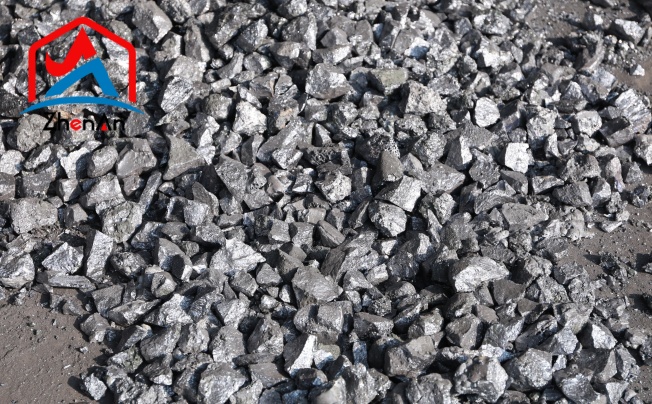Materials science is a realm of endless possibilities, where innovation and experimentation often lead to remarkable breakthroughs. The question arises in this pursuit of pushing boundaries: Can you silicone metal?
Siliconizing Metal Surfaces
Exploring the Intricacies of Siliconizing Metal Surfaces
When it comes to siliconizing metal surfaces, a meticulous process is involved to ensure the successful integration of the two materials. The process typically begins with thorough surface preparation, which may include cleaning, degreasing, and roughening the metal substrate to promote adhesion.
Next, a thin layer of silicon or a silicon-containing compound is applied to the metal surface through various methods such as chemical vapor deposition (CVD) or physical vapor deposition (PVD).
Unveiling the Benefits of Siliconizing Metal
Siliconizing metal surfaces offers a myriad of advantages that make this technique highly desirable in various industries. One of the primary benefits is enhanced corrosion resistance. The silicone coating acts as a protective barrier against corrosive elements, preventing oxidation and rust formation on the metal surface.
Additionally, siliconized metals exhibit improved wear resistance due to the inherent properties of silicone, such as high durability and low friction coefficient. This makes them ideal for applications where mechanical stress and abrasion are common.
Redefining Durability and Performance with Siliconized Metals
By siliconizing metal surfaces, manufacturers can elevate their products' durability and performance characteristics to new heights. The combination of silicone's flexibility and heat resistance with metal's strength and conductivity results in composite materials that excel in harsh environments.
Whether used in aerospace components subjected to extreme temperatures or industrial machinery exposed to corrosive chemicals, siliconized metals prove their mettle by outperforming traditional materials. This innovative approach not only enhances product longevity but also opens doors for novel applications across diverse sectors.
Challenges and Considerations
When considering the application of silicone on metal surfaces, one of the primary challenges is the compatibility between silicone and specific types of metals. While silicone is known for its versatility and resistance to extreme temperatures, not all metals can effectively bond with silicone. For instance, reactive metals like aluminium and titanium can pose compatibility issues due to their chemical properties.
The formation of a strong bond between silicone and these metals may be hindered, leading to potential adhesion failures or subpar results in terms of durability. Moreover, certain metals contain surface contaminants or oxides that can impede the adhesion of silicone coatings.
Without proper surface preparation techniques such as cleaning, degreasing, or pre-treatments like plasma activation or chemical etching, achieving a reliable bond between silicone and these metals becomes even more challenging.
Firstly, the cleanliness and roughness of the metal surface significantly affect the adhesion strength of silicone coatings.
Proper surface preparation techniques are essential to ensure that any contaminants or irregularities are removed, providing a clean substrate for optimal bonding with silicone. Additionally, controlling factors such as temperature, humidity levels, and curing conditions during the siliconizing process is vital in achieving uniform coverage and adhesion across the metal surface.
Furthermore, the choice of silicone material and application method can impact the success rate when siliconizing metal surfaces. Different types of silicones exhibit varying levels of compatibility with specific metals based on their formulation and curing mechanisms.
Selecting a silicone product that is tailored to adhere well to the target metal substrate is crucial for achieving durable and effective coatings. The method used for applying silicone onto metal surfaces—whether through spray coating, dip coating, or brushing—also influences the overall quality and longevity of the siliconized layer.
Future Prospects
Pushing the Boundaries
The realm of silicone-metal hybrid materials is a burgeoning field that continues to attract attention from researchers across various disciplines. Recent advancements in material science and engineering have paved the way for exciting developments in siliconizing metal surfaces.
Scientists are delving deep into understanding the intricate interactions between silicone and metals, unlocking new possibilities for enhancing the performance and properties of these hybrid materials. Cutting-edge research initiatives are focusing on refining the siliconizing process, exploring novel alloys, and investigating innovative applications for siliconized metals.
Innovation on the Horizon
As technology advances at a rapid pace, there is immense potential for further innovation in combining silicone with metals. The synergy between these two materials offers a wide array of opportunities for creating next-generation products with superior characteristics.
From improving corrosion resistance to enhancing thermal conductivity, the marriage of silicone and metal holds promise for revolutionizing industries such as aerospace, automotive, and healthcare. Innovators are now looking beyond conventional applications and venturing into uncharted territories to unleash the full potential of siliconized metals.
The prospects for silicone-metal combinations are brimming with possibilities and untapped potential. The dynamic interplay between silicone polymers and metallic substrates opens up a world of opportunities for innovation and advancement in materials science.
With ongoing research endeavors driving progress in this field, we can expect to witness groundbreaking discoveries that will shape the way we perceive and utilize siliconized metals. As we stand on the cusp of a new era of material engineering, it is clear that the fusion of silicone with metals will continue to captivate scientists, engineers, and enthusiasts alike with its boundless prospects for growth and evolution.






